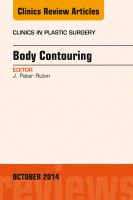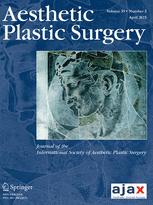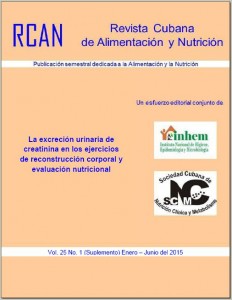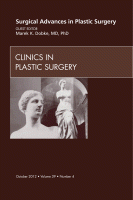Afrooz, P. N; Pozner, J. N; Di Bernardo, B. E.
Clinics in Plastic Surgery, 2014-10-01, Volúmen 41, Número 4, Pages 789-804
 Major surgical body contouring procedures have several inherent drawbacks, including hospitalization, anesthetic use, pain, swelling, and prolonged recovery. It is for these reasons that body contouring through noninvasive and minimally invasive methods has become one of the most alluring areas in aesthetic surgery. Patient expectations and demands have driven the field toward safer, less-invasive procedures with less discomfort, fewer complications, and a shorter recovery. In this article, the current minimally invasive and noninvasive modalities for body contouring are reviewed.
Major surgical body contouring procedures have several inherent drawbacks, including hospitalization, anesthetic use, pain, swelling, and prolonged recovery. It is for these reasons that body contouring through noninvasive and minimally invasive methods has become one of the most alluring areas in aesthetic surgery. Patient expectations and demands have driven the field toward safer, less-invasive procedures with less discomfort, fewer complications, and a shorter recovery. In this article, the current minimally invasive and noninvasive modalities for body contouring are reviewed.
 Según el Diccionario de la Real Academia Española (DRAE) un anglicismo es un vocablo o giro de la lengua inglesa empleado en otra. En el caso de nuestro idioma no es difícil hallar ejemplos ya que nuestras conversaciones diarias se encuentran plagadas de este tipo de términos: pin, panty, penalti. Ampliar…
Según el Diccionario de la Real Academia Española (DRAE) un anglicismo es un vocablo o giro de la lengua inglesa empleado en otra. En el caso de nuestro idioma no es difícil hallar ejemplos ya que nuestras conversaciones diarias se encuentran plagadas de este tipo de términos: pin, panty, penalti. Ampliar…![]()
 Autologous lipotransfer is seen as an ideal filler for soft tissue reconstruction. The main limitation of this procedure is the unpredictable resorption and volume loss of the fat graft. In the recent decade, an increasing amount of research has focused on the use of adipose tissue-derived stromal cells (ASCs) to enrich the fat graft, a procedure termed cell-assisted lipotransfer (CAL). The aim of this review was to systematically review the current preclinical and clinical evidence for the efficacy of CAL compared with conventional lipotransfer.
Autologous lipotransfer is seen as an ideal filler for soft tissue reconstruction. The main limitation of this procedure is the unpredictable resorption and volume loss of the fat graft. In the recent decade, an increasing amount of research has focused on the use of adipose tissue-derived stromal cells (ASCs) to enrich the fat graft, a procedure termed cell-assisted lipotransfer (CAL). The aim of this review was to systematically review the current preclinical and clinical evidence for the efficacy of CAL compared with conventional lipotransfer. Although platelet-rich plasma (PRP) is nowadays a common method in various medical fields, including cosmetic surgery or dermatology, the expensiveness of the kit for processing is still a hurdle.
Although platelet-rich plasma (PRP) is nowadays a common method in various medical fields, including cosmetic surgery or dermatology, the expensiveness of the kit for processing is still a hurdle.

 Major surgical body contouring procedures have several inherent drawbacks, including hospitalization, anesthetic use, pain, swelling, and prolonged recovery. It is for these reasons that body contouring through noninvasive and minimally invasive methods has become one of the most alluring areas in aesthetic surgery. Patient expectations and demands have driven the field toward safer, less-invasive procedures with less discomfort, fewer complications, and a shorter recovery. In this article, the current minimally invasive and noninvasive modalities for body contouring are reviewed.
Major surgical body contouring procedures have several inherent drawbacks, including hospitalization, anesthetic use, pain, swelling, and prolonged recovery. It is for these reasons that body contouring through noninvasive and minimally invasive methods has become one of the most alluring areas in aesthetic surgery. Patient expectations and demands have driven the field toward safer, less-invasive procedures with less discomfort, fewer complications, and a shorter recovery. In this article, the current minimally invasive and noninvasive modalities for body contouring are reviewed.






 Sitio web publicado el
Sitio web publicado el
Los lectores comentan